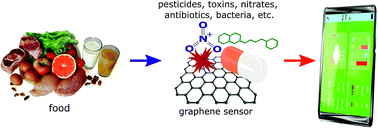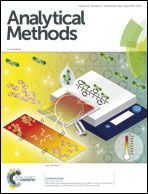Graphene-based biosensors for on-site detection of contaminants in food
Abstract
Carbon nanostructures like graphene and carbon nanotubes are promising components for biosensor transducers because of the high sensitivity of their properties to changes in the environment. One of the most auspicious applications where carbon nanostructures demonstrate an active growth of research interest is food analysis. The unique physical and chemical properties of graphene, as well as carbon nanotubes, warrant their multimodal application potential. The high specific surface area and catalytic activity are utilized for the extraction of analytes from food samples. In addition to their high absorption ability, their high conductivity contributes to the performance efficacy of the electrodes. The main application of carbon nanostructures is expected in constitution of transducing elements of biosensors due to their inherent high modulation capabilities of physico-chemical properties upon exposure to different analytes, and their stability under harsh chemical conditions. They have been utilized as transducers in biosensing platforms such as electrochemical, optical, chemoresistive and field effect transistor-based biosensors for detection of various analytes in food. In this review, we discuss the current state-of-the-art of graphene and carbon nanotube applications in the sensors for food analysis. We summarize the recent progress in using carbon nanostructures for detection of chemical contaminants in food, and the principles of operation, and discuss the perspectives of developing portable devices for rapid in-field analysis.

- This article is part of the themed collection: Recent Review Articles


 Please wait while we load your content...
Please wait while we load your content...